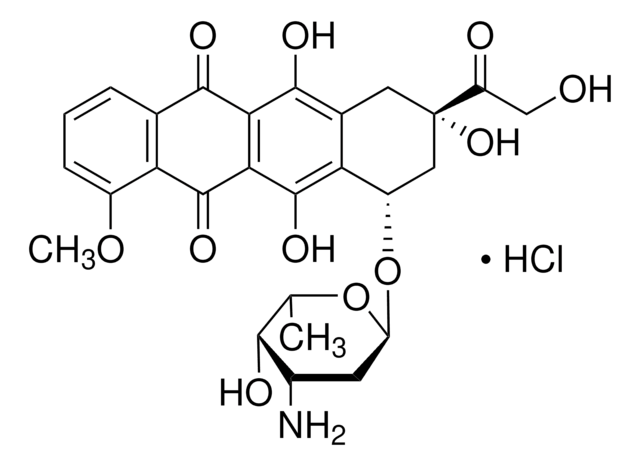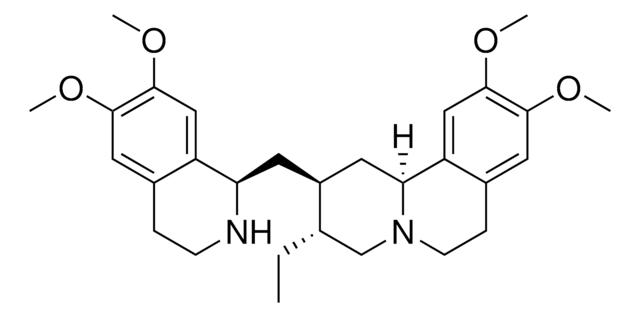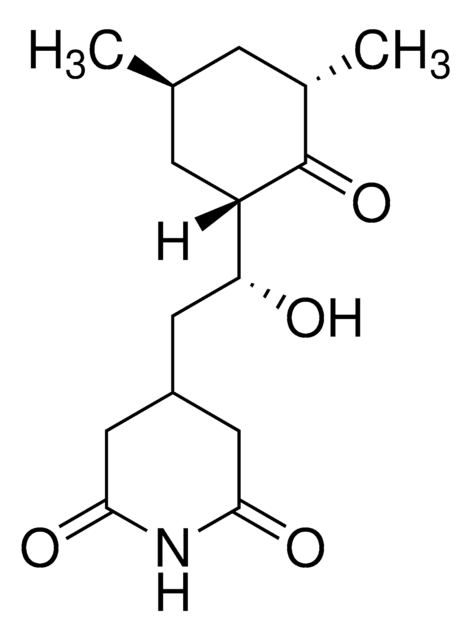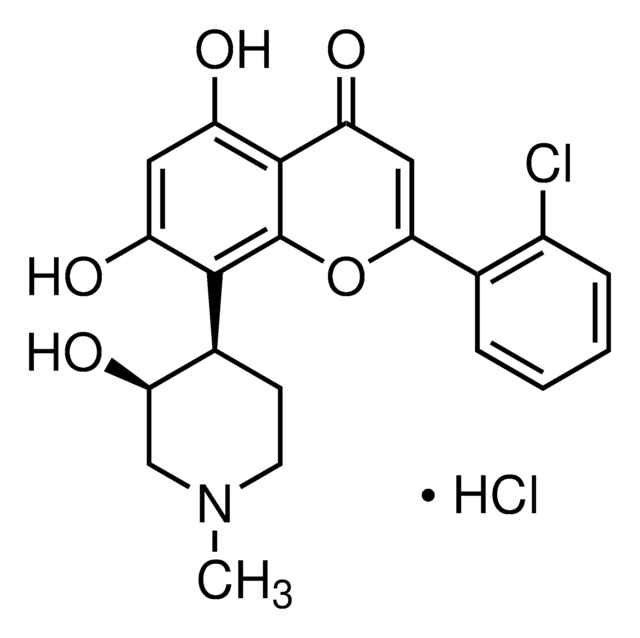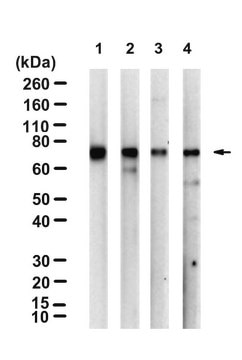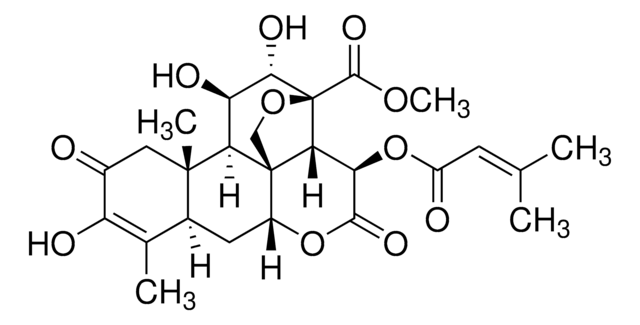SML1091
Homoharringtonine
≥98% (HPLC)
Synonym(s):
Ceflatonin, Cephalotaxine 4-methyl (2R)-2-hydroxy-2-(4-hydroxy-4-methylpentyl)butanedioate, Myelostat, NSC 141633, Omacetaxine mepesuccinate
About This Item
Recommended Products
Quality Level
assay
≥98% (HPLC)
form
powder
optical activity
[α]/D -120 to -140°, c = 1 in chloroform-d
color
white to beige
solubility
DMSO: 20 mg/mL, clear
storage temp.
2-8°C
SMILES string
COC(=O)C[C@](O)(CCCC(C)(C)O)C(=O)O[C@H]1C2c3cc4OCOc4cc3CCN5CCC[C@]25C=C1OC
InChI
1S/C29H39NO9/c1-27(2,33)8-5-10-29(34,16-23(31)36-4)26(32)39-25-22(35-3)15-28-9-6-11-30(28)12-7-18-13-20-21(38-17-37-20)14-19(18)24(25)28/h13-15,24-25,33-34H,5-12,16-17H2,1-4H3/t24-,25-,28+,29-/m1/s1
InChI key
HYFHYPWGAURHIV-JFIAXGOJSA-N
Looking for similar products? Visit Product Comparison Guide
Application
Biochem/physiol Actions
Features and Benefits
signalword
Danger
hcodes
Hazard Classifications
Acute Tox. 2 Dermal - Acute Tox. 2 Inhalation - Acute Tox. 2 Oral
Storage Class
6.1A - Combustible, acute toxic Cat. 1 and 2 / very toxic hazardous materials
wgk_germany
WGK 3
flash_point_f
Not applicable
flash_point_c
Not applicable
Certificates of Analysis (COA)
Search for Certificates of Analysis (COA) by entering the products Lot/Batch Number. Lot and Batch Numbers can be found on a product’s label following the words ‘Lot’ or ‘Batch’.
Already Own This Product?
Find documentation for the products that you have recently purchased in the Document Library.
Customers Also Viewed
Related Content
We offer a variety of small molecule research tools, such as transcription factor modulators, inhibitors of chromatin modifying enzymes, and agonists/antagonists for target identification and validation in gene regulation research; a selection of these research tools is shown below.
Our team of scientists has experience in all areas of research including Life Science, Material Science, Chemical Synthesis, Chromatography, Analytical and many others.
Contact Technical Service